Do you constantly monitor email marketing metrics but it never brings desired results? Each metric, from open rates to click through rates, might be telling you something – you need to optimize your email marketing.
At first glance, email optimization might look like voodoo, but there are actual, straightforward strategies you can implement today. You’ll discover them all here today, but first, let’s talk about the role of email optimization.
Email Optimization and Why It Should Be Utilized
Email marketing can have a huge return on investment (ROI) – we’re talking about 3600%. But this is only true if the emails are optimized, i.e., the right message reaches the right people at the right time.
So, how does optimization look on paper? It’s the measures you take to ensure the messages of your email marketing campaigns work. If your primary goal is to connect with prospects and increase conversion rates, email optimization should help improve click-through rates, which can translate to revenue.
Similarly, email campaign optimization strengthens brand recognition and builds customer loyalty, equating to profit in the long run.
12 Email Optimization Strategies
Feeling ready to level up in email marketing? Here’s to successful campaigns and better results:
Craft Attention-Grabbing Subject Lines
You may announce a $ 1 million giveaway in your email, but it’s all for nothing if your email subject line doesn’t pique your subscribers’ attention and compel them to open your email. This is the littlest thing email marketers can neglect and cause the biggest email marketing campaign failure.
So, how do you craft a compelling subject line and avoid disaster? Choose one or all of the bulletproof ways:
- Write a subject line that hints at the prospect’s needs being fulfilled;
- Mention in your subject line that what’s inside might answer subscribers’ pain points;
- Use actionable language to encourage the readers to take the first action – open your email;
- Make your subject line no longer than 48 characters – be concise.
And don’t forget that your subject line should match the content of your email. Otherwise, the recipients who opened your email will leave disappointed and might not come back.
Fleur & Bee knows how to grab attention before anything else. It announces a surprising discount, informs what it’s for, and creates FOMO (Fear of Missing Out) in a single 32-character subject line:

Choose a Recognizable Sender Name
Your brand’s name has weight. Leverage it to build trust in your emails – ensure it’s visible as the sender’s name. Being recognized increases the chances of an email being opened. Otherwise, your email might be marked as spam or an even more dreaded scam.
If you regularly send different types of emails, for example, sales and newsletters, consider adding a specific topic to the sender’s name. For example, Adweek sends emails promoting partner’s content from “Adweek Partner,” webinars – from “Adweek Webinars,” and daily newsletters from “Adweek”.
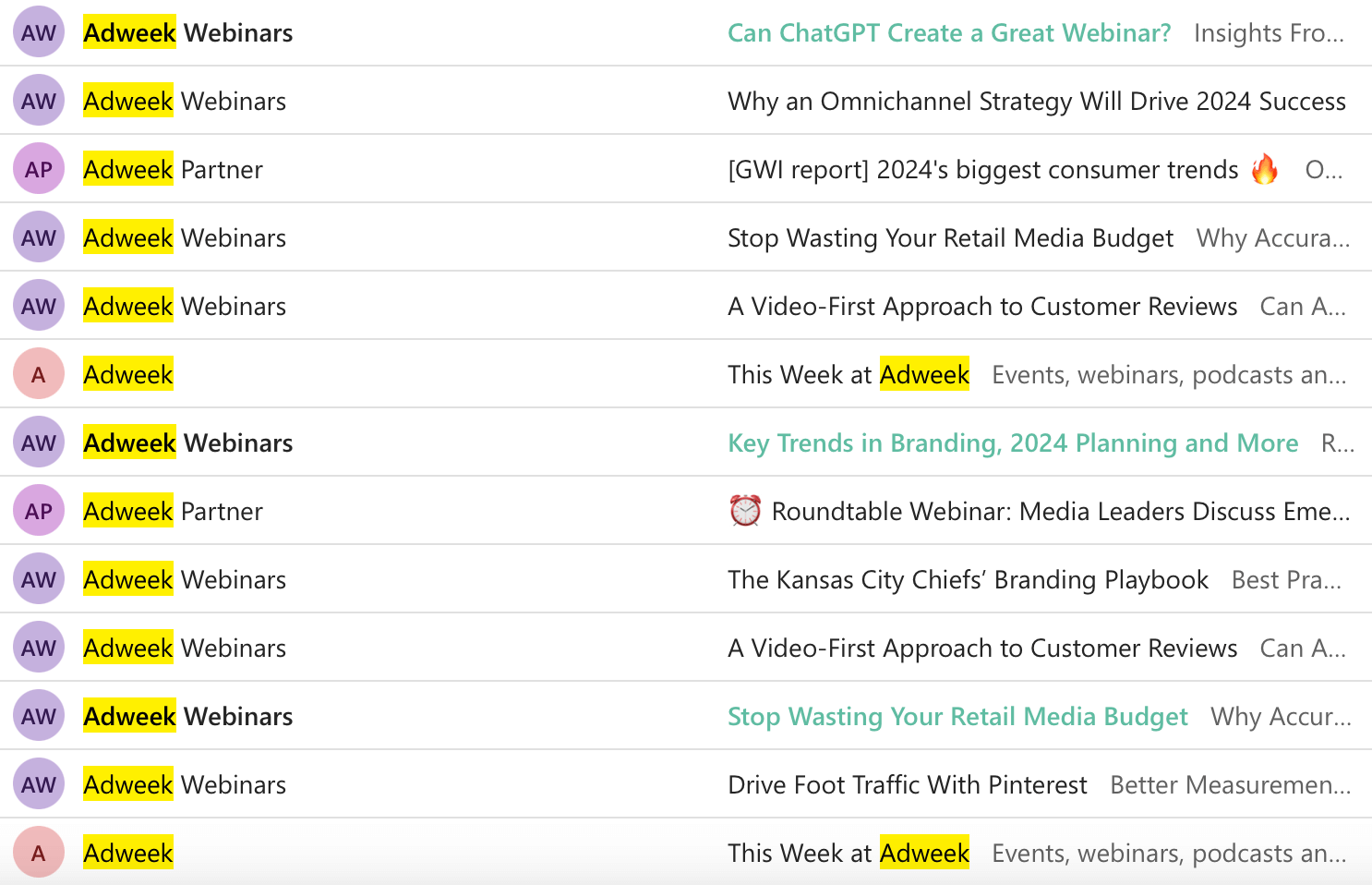
Segmentation
Once you’ve identified the most relevant criteria to your campaign goals, you can create custom segments. For example, if you’re running a promotion for a new product, you might develop segments for “Frequent Shoppers,” “Recent Buyers,” and “Window Shoppers.”
At Ritual, Yours Truly is segmented into a group of people who still haven’t bought anything and are sent emails with discounts on the first order:
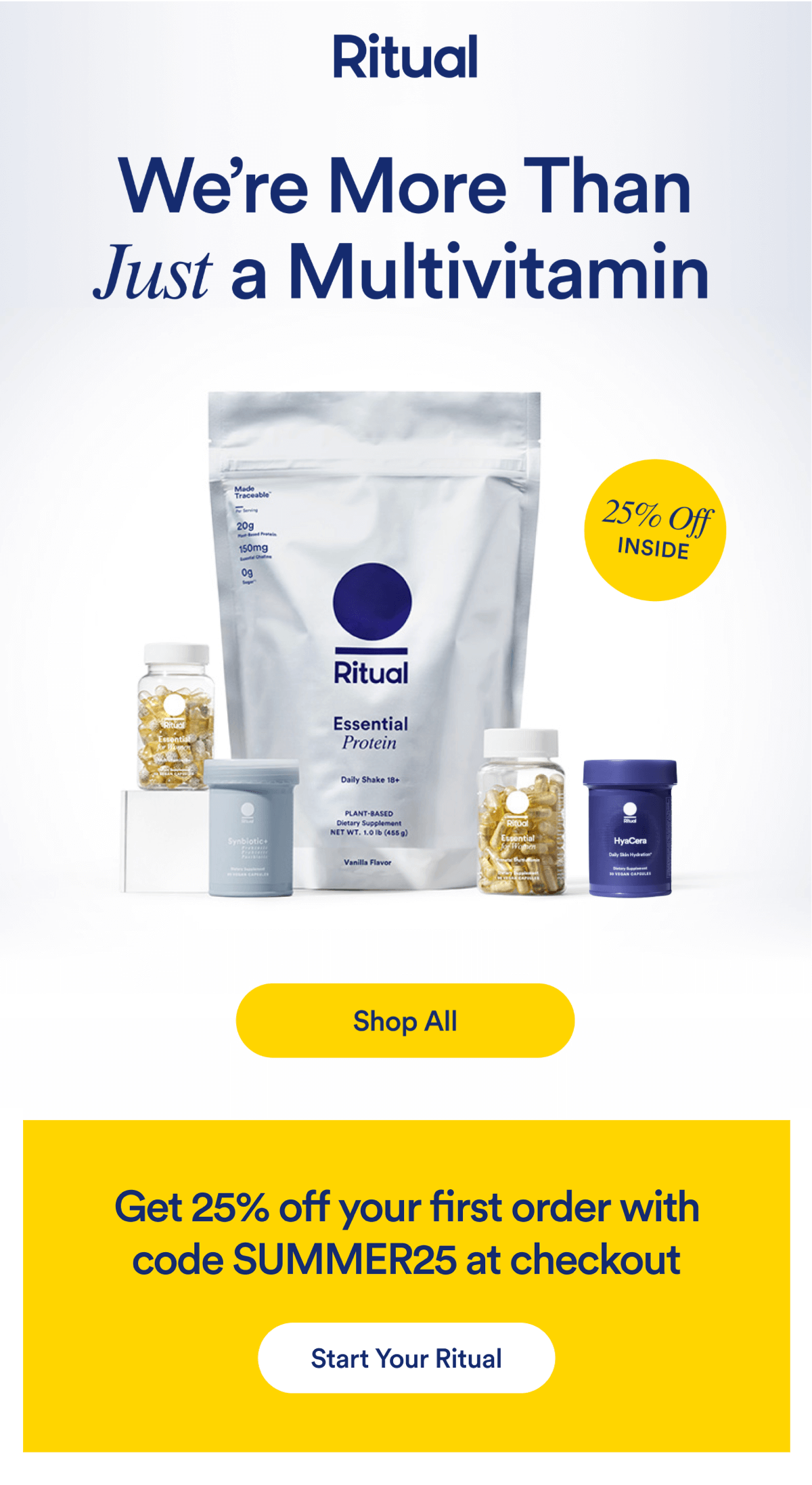
You may also give some “segmentation power” to your audience, who’ll tell you what content interests them the most. The best way to do this is through an email preference center, where your subscribers can control their email experience.
Here’s an example from Litmus:
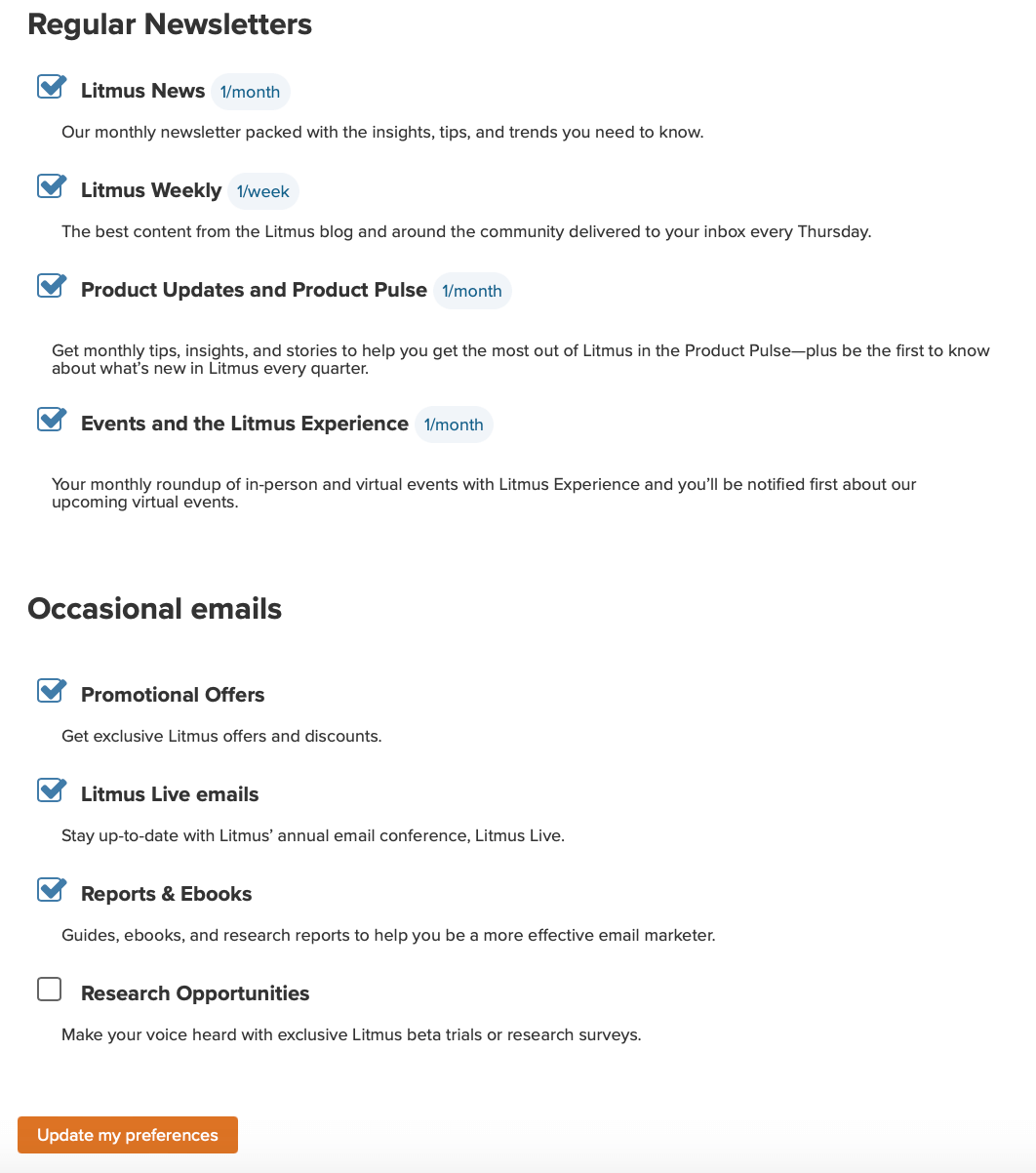
Note: As subscribers move from one segmentation group to another, you must continually assess and refine them to stay relevant.
Create Tailored Messages
Let’s discuss another game-changer in email marketing: personalization. It can boost transaction rates six times!
Now, how can you make your emails more personal? Well, if you’ve already tackled segmentation, here are a few approaches:
- Try using your subscriber’s first name or other personal details to grab their attention right from the start;
- Send content that speaks directly to the characteristics of different segments within your audience. Make them feel like you’re talking just to them;
- Show your subscribers you know what they like! Send product recommendations based on their past purchases or interests;
- Craft a summary of their interactions with your service or product. Let them know you’re paying attention and value their engagement.
Spotify expertly does the latter way. Their yearly summary called “Spotify Wrapped” is eagerly awaited by 574 million users:

Create Engaging Content
Your subscribers opened your email. Next in their conversion journey is content, but not just any content. Ensure it’s relevant. You may offer your subscribers something in return, but first, you must explain how it will improve their lives.
From there, consider making your content more precise and concise. You have several tricks up your sleeves:
- Break text into short paragraphs or bullet points;
- Use images to illustrate text;
- Write in simple words that your readers use;
- Keep visual hierarchy.
Fishwife knows well how to fit valuable content in bite-sized pieces. The brand uses separate color blocks to mark different topics, each with its headline and image. Its’ email doesn’t only look readable, it’s visually engaging too:

For more tips and examples of great email content check out this article: What is Email Content? Definition, types & examples.
Include Distinct CTAs
The biggest step closer to conversions is clicking on your call-to-action (CTA) – when a prospect is directed from email to your website with the finish line.
This is no small feat, so ensure your CTA:
- communicates a clear goal, i.e., “Sign Up”;
- mentions what the subscriber will get for it, i.e., “Sign Up for a Free Course”
- is actionable, i.e., “Sign Up Now for a Free Course”
- has a contrasting button;
- is above the fold where the readers can see it without the need to scroll down.
Bubble Goods ticked off the boxes and presented a hard-to-miss CTA:
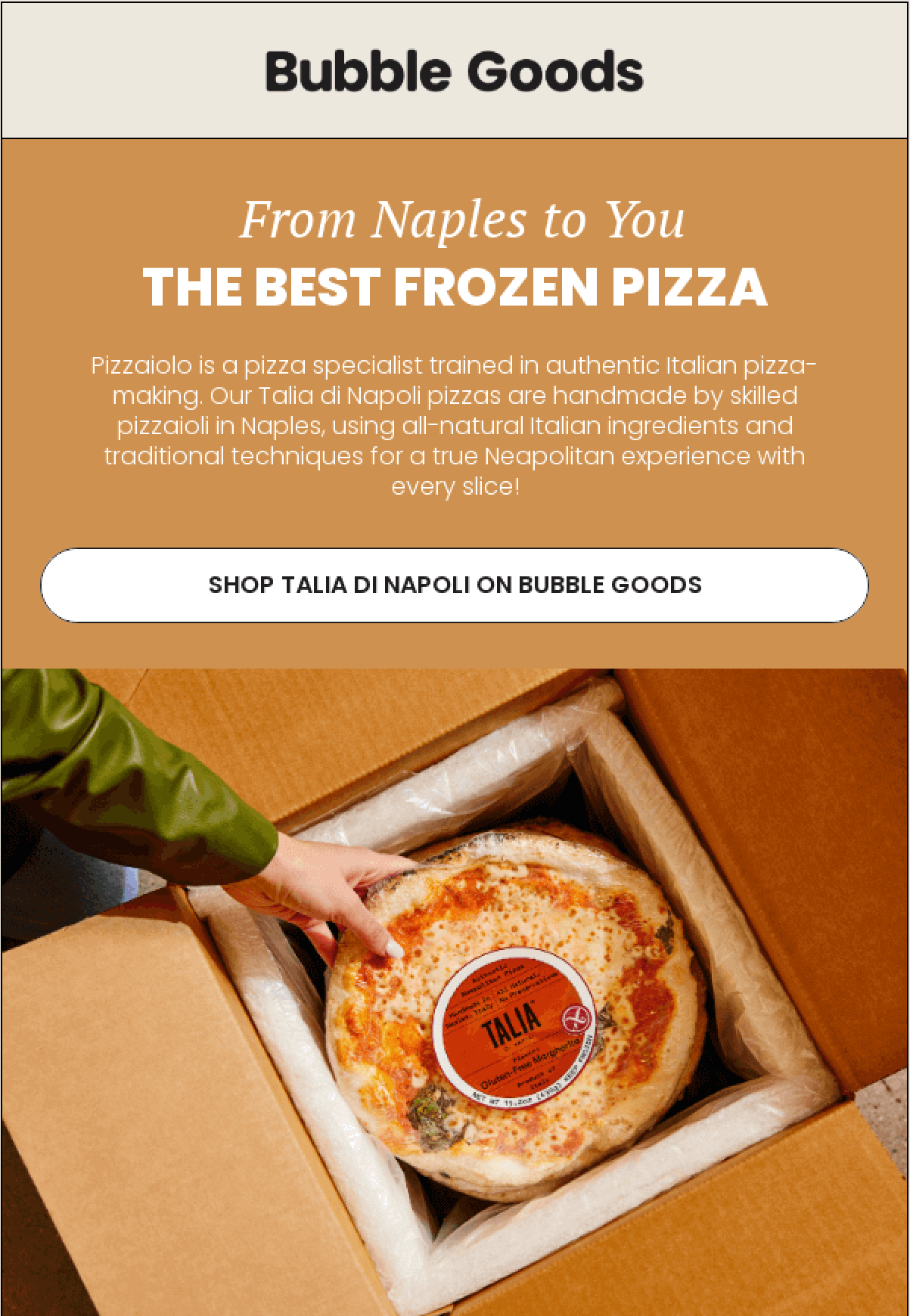
This newsletter is not the only one — check out these 5 email CTA examples & best practices.
Pro Tip. If your CTA has a clear, single goal, so should your website. Instead of directing your prospects to the general homepage where they need to search for information, refer them to a dedicated landing page.
Present a Range of Shareable Links
Your email marketing strategy can also have a multichannel approach. And that’s as easy as 1-2-3. Add the social media buttons at the bottom of your email to encourage your subscribers to become followers on different platforms. This way, you’ll guarantee broader audience reach and potentially increase brand visibility to those who might not yet know about you.
You may also include links directing to separate pages on your website. Just in case your subscriber isn’t that interested in your primary goal, you can still convert them through other paths.
Here’s how Mode uses both approaches to their advance:
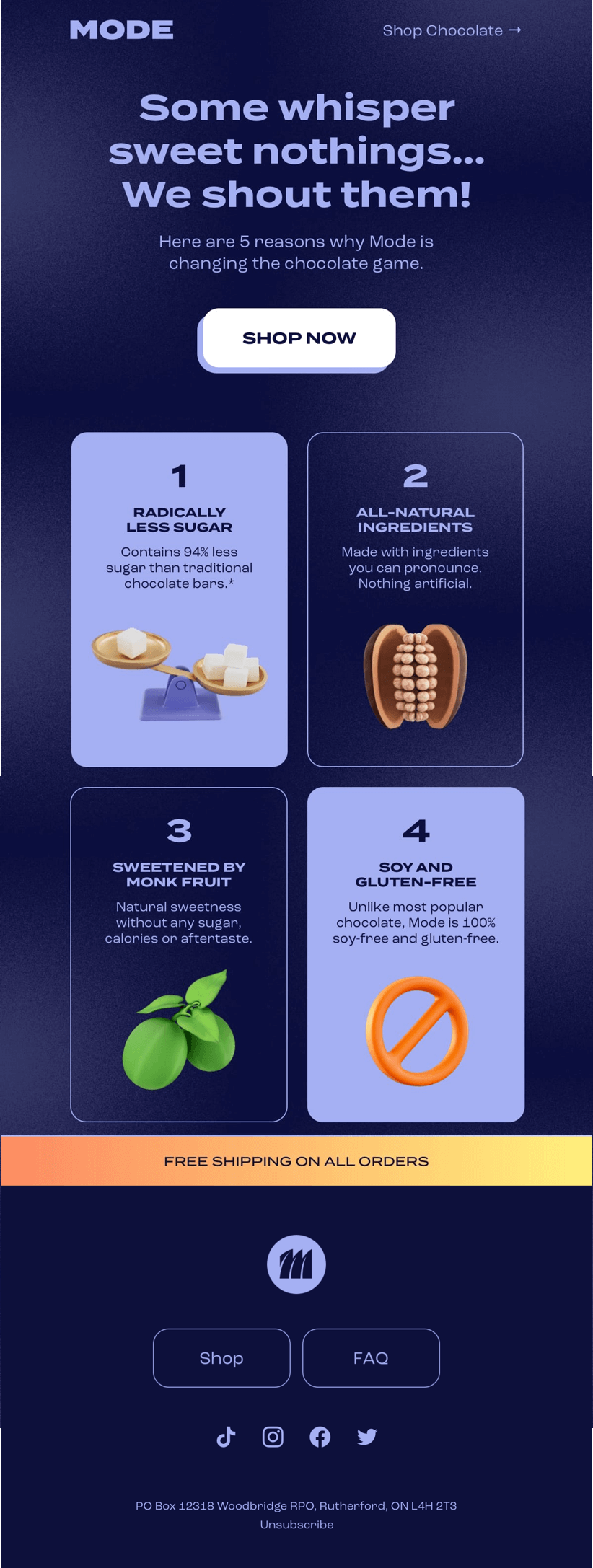
Optimize for Mobile Usability
Today the stakes in sending mobile-unresponsive emails are too high, as a whopping 85% of users are using mobile devices to check their inboxes.
To be truly impactful, your emails should look good on any size or shape screen. So, before you send out an email campaign, always test how it looks across different devices. Or use email marketing software to do the job.
Below you can see how the same email from ASOS adapts for desktop and mobile screens:
Desktop

Mobile

Do you want your emails to shine on every device? Look no further! Sender, with its mobile-responsive templates, has got you covered. Browse the collection of professionally designed, ready-to-use templates, and rest assured that your subscribers will experience your emails exactly as you intend.

The best news? You can select from a range of 50 templates and send them to up to 2,500 subscribers without spending a dime! No need to provide credit card information and there are no hidden fees.
Include an Option to Unsubscribe
Ensuring that your readers can easily opt out of receiving your emails is a good practice as well as a legal requirement under the CAN-SPAM Act and the GDPR. Under these regulations, you must include an unsubscribe link in every email. This link is more than just a legal checkbox; it’s a sign of your commitment to transparency and respect for your audience. Here’s why it’s so important:
- The unsubscribe link gives individuals the power to choose what they want to receive in their inboxes;
- By making it easy for subscribers to opt out, you demonstrate that you value their trust and are not interested in bombarding them with unwanted messages;
- Complying with the CAN-SPAM and GDPR is not just a matter of avoiding fines; it’s a reflection of your commitment to ethical email marketing practices;
- When subscribers have a straightforward way to unsubscribe, they are less likely to mark your emails as spam.
The best practice is to include the link directing to the unsubscribe page where your audience expects it to be – in the email footer. Here’s an example to illustrate it:
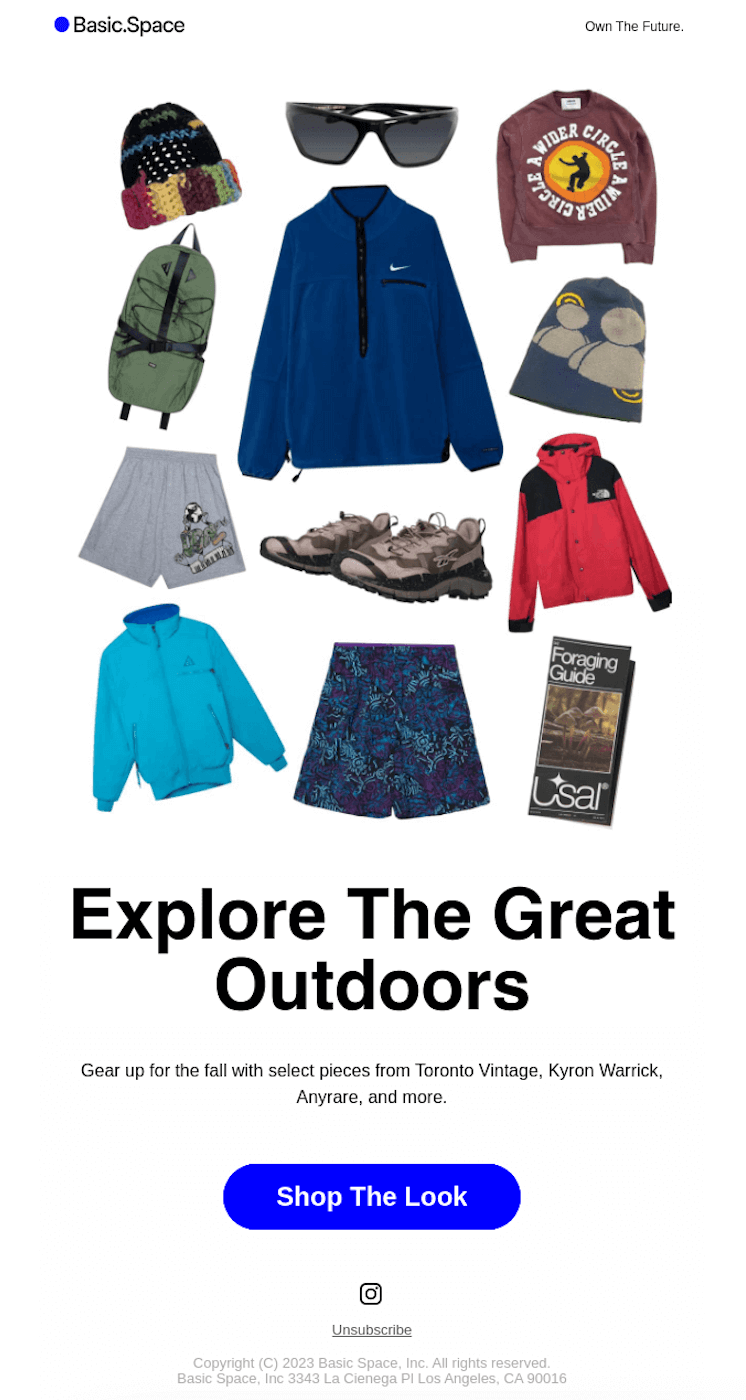
Create Mobile Responsive Design
Long gone are the days of the weirdly distorted emails on mobile devices. Ensure your email looks good even on the smallest screen with the following practices:
- Instead of squishing everything side by side, stack things up nicely in a single column;
- Pump up the font size so you don’t need to zoom in to read your emails;
- Buttons should be easy to touch with your fingers;
- Content must resize to fit the screen, whether it’s a phone or a tablet;
- Test everything to make sure it works on different devices and email apps;
- Avoid Flash and JavaScript, which can be finicky on mobile gadgets;
- If images don’t load, have a plan B with alt text – it explains what’s missing.
And how’s the best practices look when applied:

Timing and Send Frequency
Two more critical factors can strengthen your email marketing efforts: timing and frequency.
When you send your emails, the timing is as important as what’s inside. Take, for example, a weekend sale. You’d want to fire-send an exciting announcement email early Friday morning. Why? Because that’s when people are most likely to open their inboxes and discover your awesome deals.
Now, how often should you fill your subscribers’ inboxes with your content? Even if your emails are packed with carefully curated, intriguing, and super helpful stuff, bombarding your subscribers can lead to them hitting the dreaded ‘unsubscribe’ button faster than you can say ‘inbox overload’.
The golden rule is to stay top of mind without overwhelming your audience. That’s where consistency comes into play. When your emails arrive like clockwork, it sets up an expectation, and your subscribers are more likely to await your next gem eagerly.
Don’t sweat it if you’re wondering the perfect day and hour to send your emails! We’ve got you covered with some handy tables you can print out and stick right next to your screen:
Email engagement throughout the week:
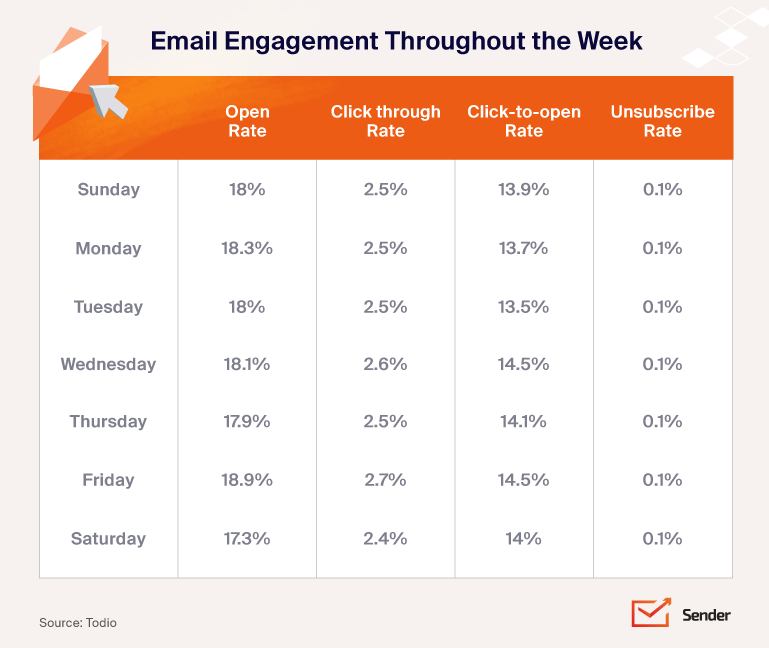
Email engagement throughout the day:
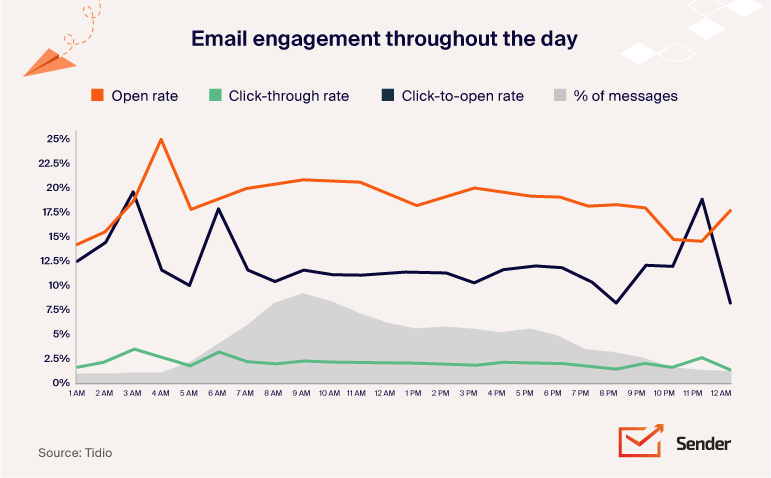
For more insights, check out the best time to send emails in 2024 (by email type).
Social Proof
Effective marketing is about more than just showcasing your brand and its products. It’s about convincing your prospects to experience the tangible benefits of your offerings, ultimately leading them to purchase. One valuable tool in achieving this is the use of social proof.
Social proof, such as customer reviews, testimonials, and user-generated content, can significantly boost trust among your subscribers. It sends a powerful message: ‘People like you have already benefited from what we offer’. This trust-building element also adds credibility to your brand’s claims, demonstrating that your products or services genuinely work.
The impact of social proof goes beyond trust and credibility. It can lead to higher conversion rates, increased engagement, and reduced cart abandonment rates. As illustrated by the Ami Ami example, it’s a marketing strategy that pays off, showcasing how seamlessly social proof can be incorporated into your email campaigns:
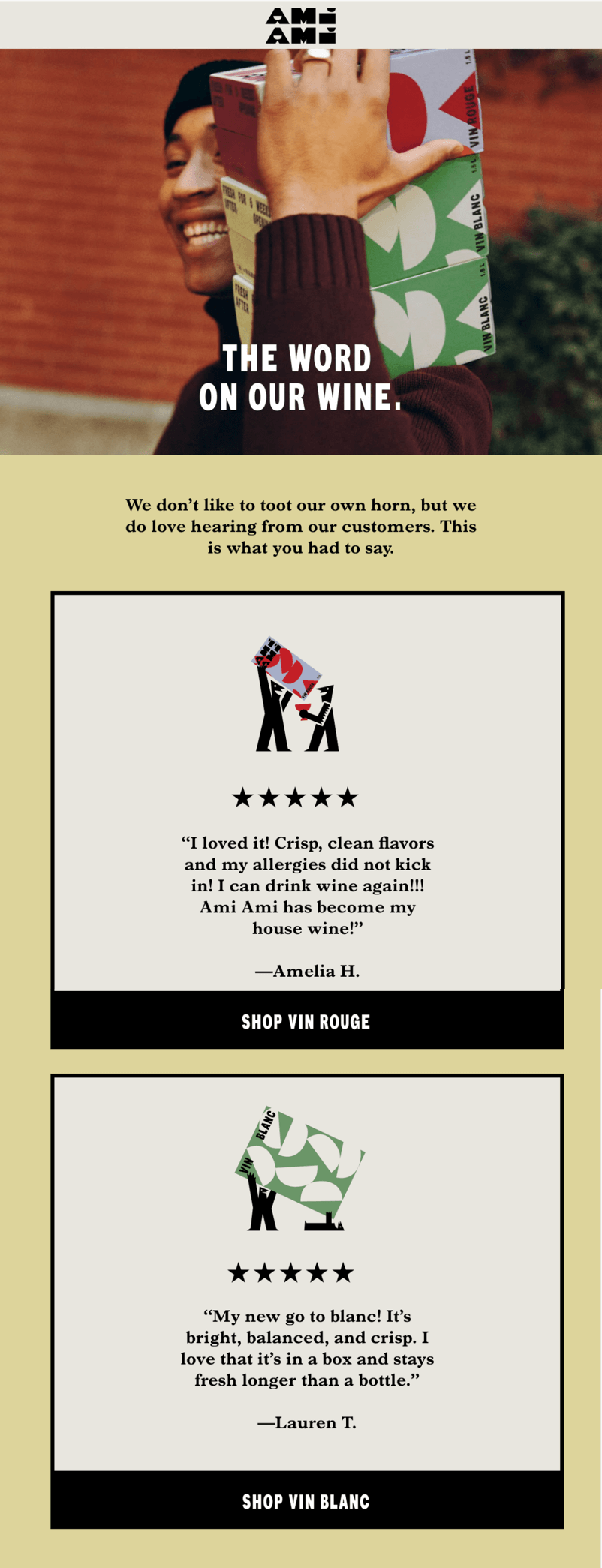
Also read: 12 Fun Newsletter Ideas Using UGC and Social Proof
Key Takeaways
Before you take a long, hard look at your email campaigns, remember this about email marketing optimization:
- Effective email marketing requires continuous monitoring and optimization based on various metrics to achieve desired results;
- Email optimization involves ensuring that the right message reaches the right people at the right time to maximize ROI;
- Crafting attention-grabbing subject lines is crucial, as they play a significant role in enticing subscribers to open your emails;
- Using recognizable sender names that align with your brand builds trust and increases the likelihood of email opens;
- Segmentation helps you target specific audience groups with tailored content, enhancing the relevance of your emails;
- Personalization, through techniques like using subscribers’ names and offering product recommendations, can significantly boost transaction rates and overall engagement.
Also read: Newsletter Best Practices for Creating Effective Newsletters
Author bio
Vesta Oldenburg is a content writer specializing in email marketing strategies. In her daily work, creativity intertwines with a strategic mindset to create content that captivates its readers





